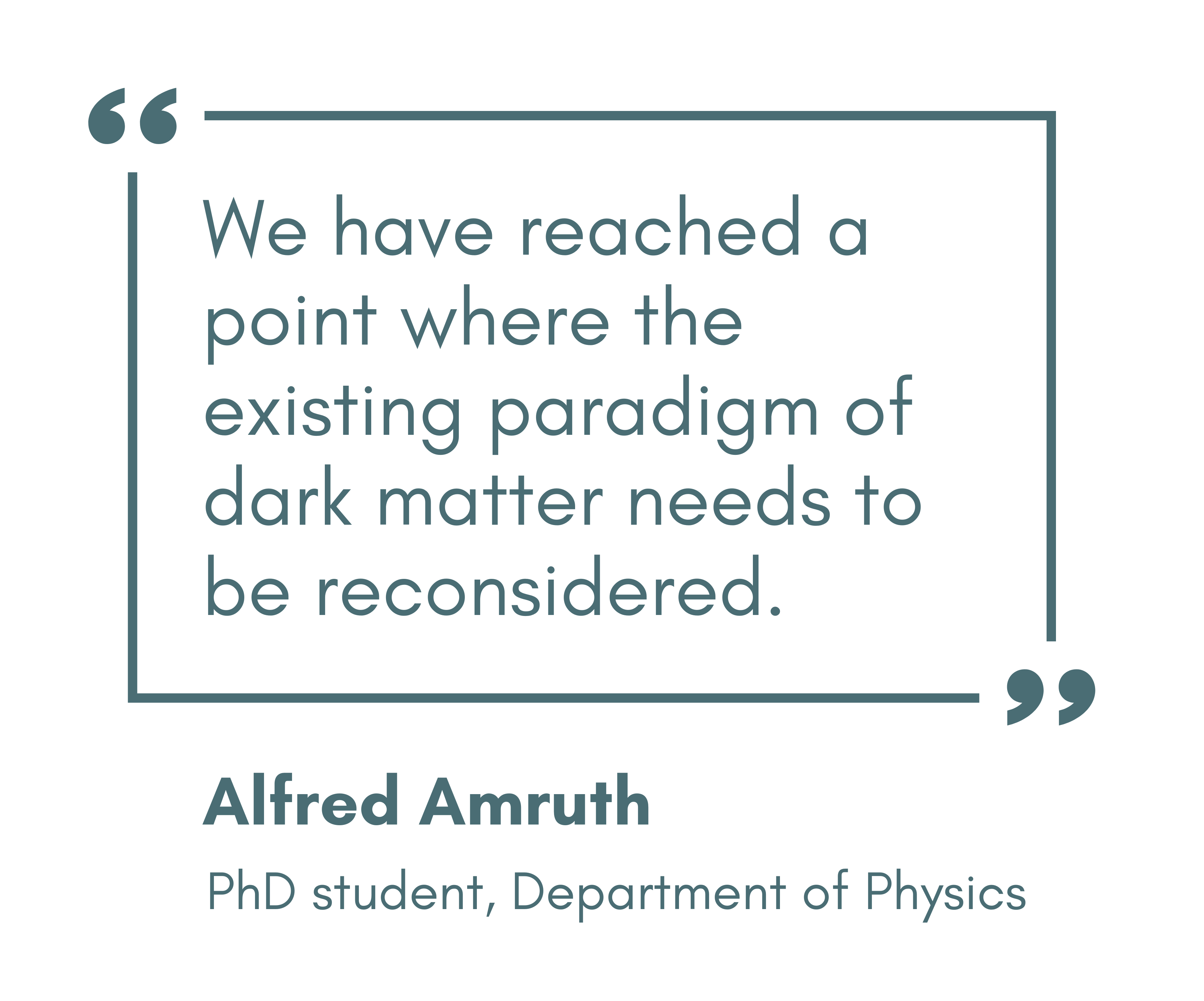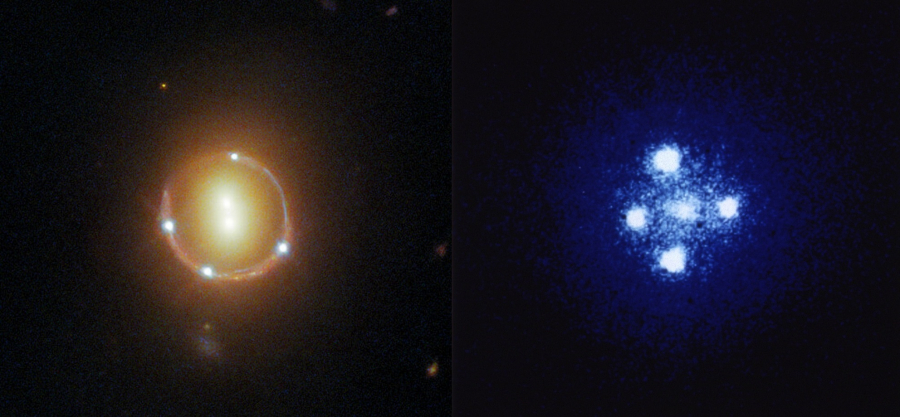

{{'Newsletter' | t}}
Research Team Led by Physics PhD Student Reveals the Nature of Dark Matter
Most of the matter in the universe—amounting to a staggering 85% by mass—cannot be observed and consists of particles not accounted for by the Standard Model of Particle Physics. These particles are known as ‘dark matter’, and their existence can be inferred from their gravitational effects on light from distant galaxies. Finding the particle that makes up dark matter is an urgent problem in modern physics, as it dominates the mass and, therefore, the gravity of galaxies—solving this mystery can lead to new physics beyond the Standard Model.
While some theoretical models propose the existence of ultramassive particles as a possible candidate for dark matter, others suggest ultralight particles. A team of astrophysicists led by Alfred Amruth, a PhD student in the team of Dr Jeremy Lim of HKU’s Department of Physics, collaborating with Professor George Smoot, a Nobel Laureate in Physics from the Hong Kong University of Science and Technology, and Dr Razieh Emami, a Research Associate at the Center for Astrophysics | Harvard & Smithsonian, has provided the most direct evidence yet that dark matter does not constitute ultramassive particles as is commonly thought but instead comprises particles so light that they travel through space like waves. Their work resolves an outstanding problem in astrophysics first raised two decades ago: Why do models that adopt ultramassive dark matter particles fail to correctly predict the observed positions and the brightness of multiple images of the same galaxy created by gravitational lensing? The research findings were recently published in Nature Astronomy.
In work led by Alfred, astrophysicists have for the first time computed how gravitationally lensed images generated by galaxies incorporating ultralight dark matter particles differ from those incorporating ultramassive dark matter particles. Their research has shown that the general level of disagreement found between the observed and predicted positions as well as the brightness of multiply-lensed images generated by models incorporating ultramassive dark matter can be resolved by adopting models incorporating ultralight dark matter particles. Moreover, they demonstrate that models incorporating ultralight dark matter particles can reproduce the observed positions and brightness of multiply-lensed galaxy images, an important achievement that reveals the crinkly rather than smooth nature of spacetime around galaxies.

“Incorporating ultralight rather than ultramassive particles for dark matter resolves several longstanding problems simultaneously in both particle physics and astrophysics,” Alfred said. “We have reached a point where the existing paradigm of dark matter needs to be reconsidered. Waving goodbye to ultramassive particles, which have long been heralded as the favoured candidate for dark matter, may not come easily, but the evidence accumulates in favour of dark matter having wave-like properties as possessed by ultralight particles.”
Alfred’s paper titled “Einstein rings modulated by wavelike dark matter from anomalies in gravitationally lensed images” published in Nature Astronomy in April 2023 has been listed in the top 1% of all papers published in all journals, and has been reported by over 40 major news outlets.
(This article is adapted from https://www.hku.hk/press/news_detail_26056.html)

Figure 1: Illustration of gravitational lensing by a galaxy.

Figure 2: Examples of gravitationally lensed images observed with the Hubble Space Telescope.

Figure 3: Visualisation of smooth versus crinkly spacetime produced by different forms of dark matter around galaxies.
